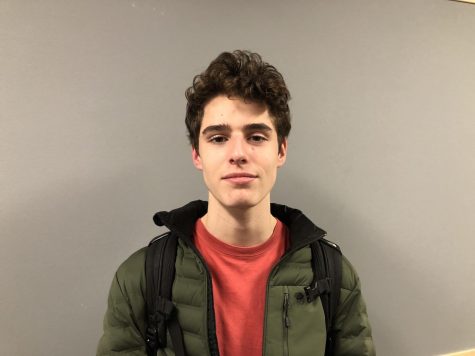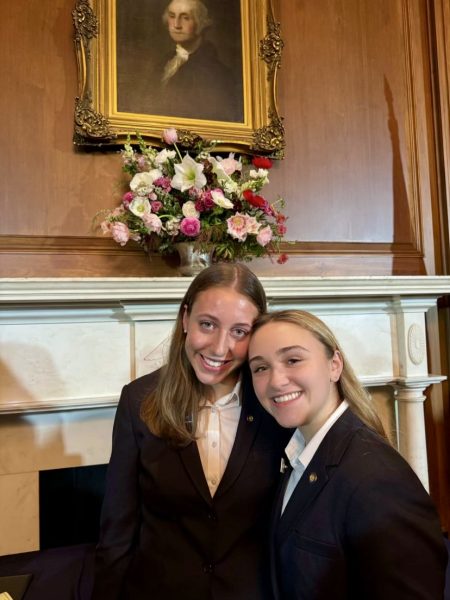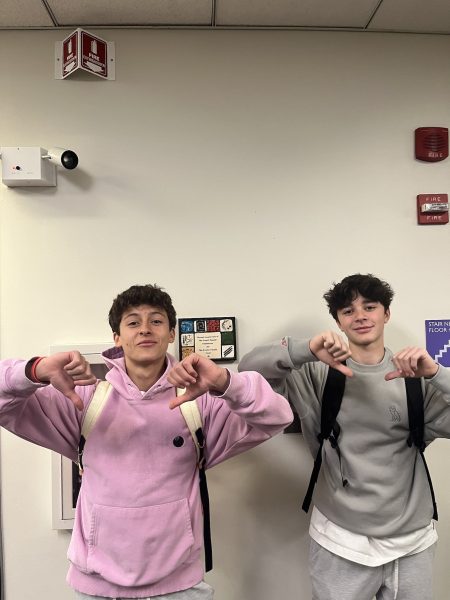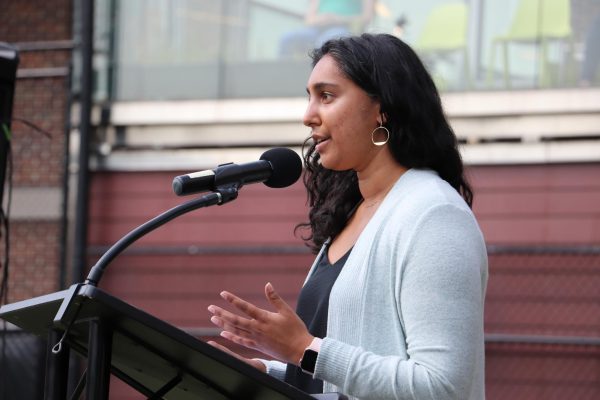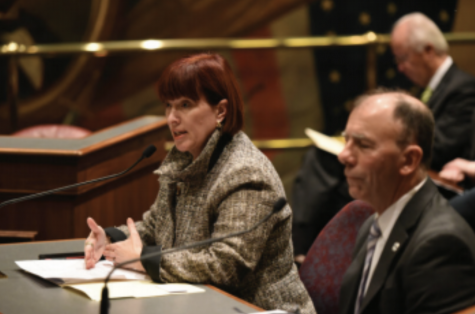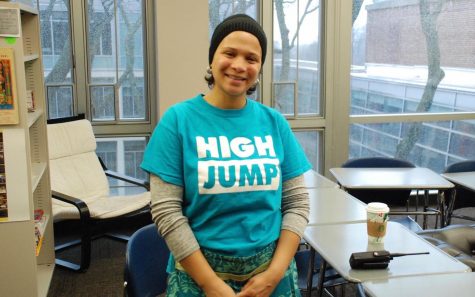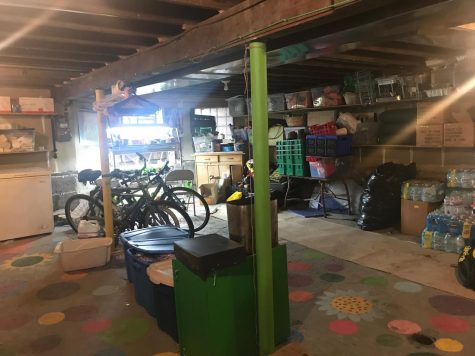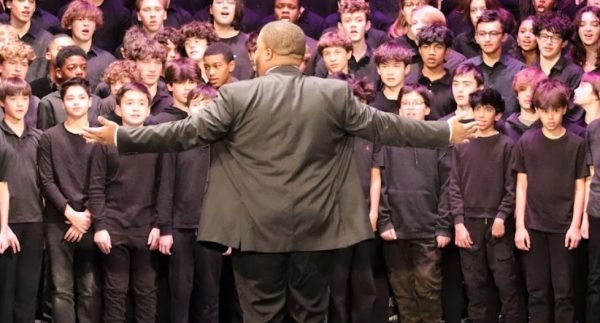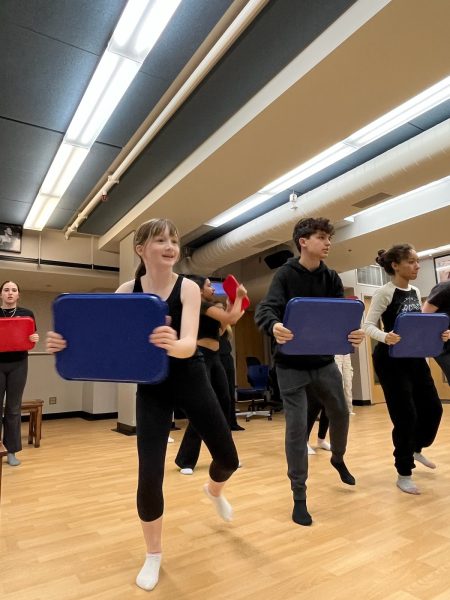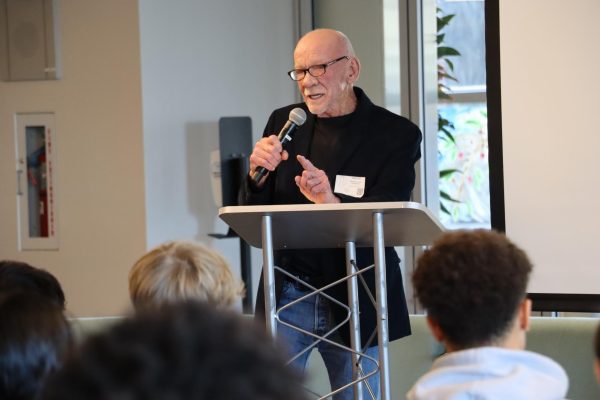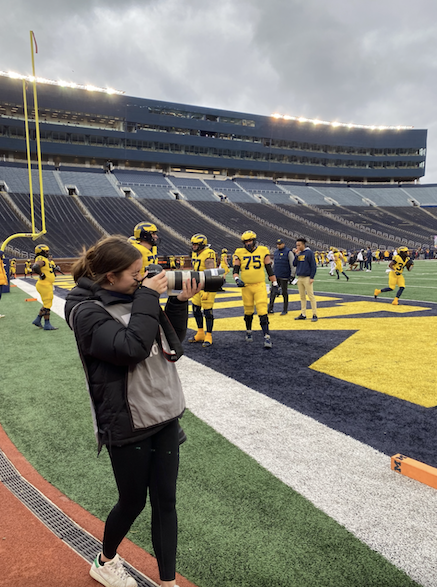From Building Bricks to Hatching Chicks
An Immersion into Lower School Morning Open Science
It’s 7:59 in the morning– a small group of first, second, and third graders cluster around the door of room 250, also known as the Lower School science room. As they patiently wait to enter, their attention is locked in onto two little habitats for new-born ducklings and chicks, whose sporadic movements they observe in awe. Another minute passes, and, to their excitement, they see their science teacher, James Audrain, open the door and welcome them into his classroom. For the next 25 minutes, the kids explore and observe different aspects of science — outside of their traditional classroom environment.
Audrain calls it “Morning Open Science,” essentially an opportunity from 8:00 to 8:25 a.m. for first through third graders to surround themselves in various areas of science, either to pursue deeper knowledge and understanding of a passion, or just to enjoy engaging activities with friends in an open, social environment.
“During general curriculum science, we’re structuring the activities and what students are pursuing and exploring,” Audrain said, “and the Open Science opportunity was to try to open it up so that students could further explore their inquiry and curiosity, and to also provide a place where people of like-minded interest might be able to come together in a variety of different grades.”
Instructing and guiding the program are Audrain and fellow Lower School Science teacher, Heather Sheahan. Back in around 2002, when Audrain came to work at Parker, there was already an unofficial Open Science, but in the years since it has grown. In 2007, Sheahan assumed the role of helping Audrain out and, with her added perspective, helped change the curriculum.
“We were very heavily animal focused probably for the first five years since I was there,” Sheahan said. “And then based on the kids’ interest, and mine and Mr. Audrain’s guidance, we shifted towards more engineering and design-type things. And so we tried to make a balance where part of the week was devoted to animals and then the rest would be buildout or, again, engineering.”
Today the teachers offer activities and projects ranging from circuitry, to building bricks, to botany and planting, geology and rocks, microscopy, flight and aerodynamics, coding, and robotics.
There is a common theme Audrain said, “Observation and action are the two components that are very consistent throughout all the activities we do.”
Audrain wants his students to be able to identify, and then solve, any curiosity or problem they’re given. A skill that will arguably carry them forward for the rest of their lives.
As for some of the classroom favorites include Cleo the Ball Python and Clark and Webster, the Sugar Gliders. During the Spring, nearly every morning features the chicks and ducks, which the kids seemingly can’t get enough of.
Cyrus Parker, a current fourth grader who attended the program from when he was younger, talked about some experiences from last year in Morning Science. “One of the things I learned is that the chicks need to be in the right heat and the right humidity, and the right environment,” Parker said, “so that they can hatch.”
It’s largely about the critters as Audrain put it. “Animals are the core thing that keep a group of lower schoolers consistently coming in all the time.”
A group of around 30 kids have come in fairly consistently throughout the year — with a group of 15 to 25 every day. The majority are 2nd or 3rd grade girls.
Lilah Laser — a fourth grader — remembers why she attended over the last couple years. “I like to go here because all of the things we do and learn about are really interesting,” said said, “ and also because it’s fun to come here with my friends.”
While Morning Open Science might be a fun way for students like Laser to learn and be with her friends, teachers also get to see a new side to their students. “When kids come in here, I get to know them in a different way than in class,” Sheehan said. “I get to know their interests, what motivates them, their personalities, and because it’s such an informal setting, it really helps us get to know those students better.”
According to Sheahan, parents also tend to encourage their kids to come in, as they view Open Science as a place where there kids can learn and grow.
“I think it’s amazing because we want to always provide our kids with rich opportunities and exciting ways to explore and be curious, and this Morning Science does exactly that,” Kara Schupp, seventh grade teacher and parent of a third grader, said. “And I think it also says a lot about the two running it because the way that they can connect with kids has encouraged them to come back every day.”
Schupp didn’t always know about it. “Before my daughter started coming here,” she said, “I didn’t even know it existed, and so it was a surprise to find out that my colleagues’ kids were doing it and that it wasn’t more known, by people like me, at Parker.”
There’s a reason behind its flying under the radar.“We don’t advertise it much because if we did, we would have more students than we can handle,” Audrain said. “So it’s kind of those who find it get to come. All parents are informed about it, but it’s up to their initiative to bring their kids in.”
There are no “big plans for the future,” but both teachers mentioned the implementation of more aspects to Open Science, and hope that, in the near future, expansion of the program will become a more viable option.
“I personally think it’s important to offer these types of opportunities for individuals because some kids don’t get the chance to really explore their interests or discover their interests,” Audrain said, “and this becomes a venue where that can happen.”
